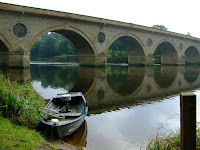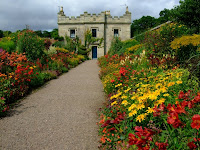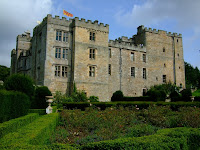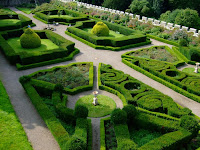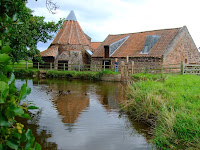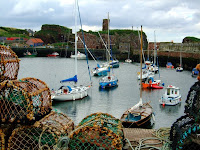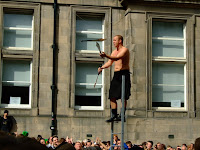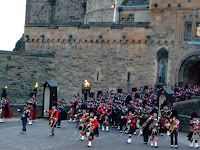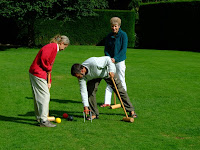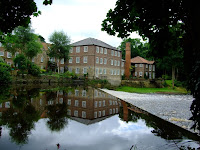 Another depressing weather forecast encouraged us to head back towards London to see if we could visit Chenies Manor House, a stately home we first came across by accident in 2001 but which is only open during the week and at bank holidays, Since we are normally working during the week and away on bank holidays we had, so far, not returned to visit.
Another depressing weather forecast encouraged us to head back towards London to see if we could visit Chenies Manor House, a stately home we first came across by accident in 2001 but which is only open during the week and at bank holidays, Since we are normally working during the week and away on bank holidays we had, so far, not returned to visit.We thought we had time for one side trip, so we left the motorway and detoured through Knaresborough to Old Mother Shipton’s cave.
 Billed as the oldest tourist attraction in the country, Henry VIII is even said to have visited. It consists of a cave where Old Mother Shipton is said to have taken refuge by a spring that discharges water with very high calcium content. This “petrifies” anything that it runs over – so the edge that the water cascades over is festooned with ‘stuff’ to be petrified – mainly small teddy bears.
Billed as the oldest tourist attraction in the country, Henry VIII is even said to have visited. It consists of a cave where Old Mother Shipton is said to have taken refuge by a spring that discharges water with very high calcium content. This “petrifies” anything that it runs over – so the edge that the water cascades over is festooned with ‘stuff’ to be petrified – mainly small teddy bears.It is quite a pleasant place to break a journey and spend a bit of time exploring, but we had places to go and things to see so we were in and out in quick time and back on the road.
We made it to Chenies just in time for the last tour of the day. Chenies Manor House used to belong to the Russell family – The Dukes of Bedford, but when sold to cover death duties in the 50s it was purchased by a couple who have restored and refurnished it.
 Henry VIII also visited Chenies; it was quoted in the trial of Catharine Howard as one of the locations she committed adultery. Unfortunately the guide we had for our tour was new, so could not confirm the story we had heard when we fist visited the church at Chenies in 2001.
Henry VIII also visited Chenies; it was quoted in the trial of Catharine Howard as one of the locations she committed adultery. Unfortunately the guide we had for our tour was new, so could not confirm the story we had heard when we fist visited the church at Chenies in 2001. The story we were told then was that the side chapel, which is a mausoleum for the Dukes of Bedford, is only opened once a week when a florist delivers one red rose to be placed on a grave. Apparently a son did this for his mother and left a bequest for this to continue after his death: all very sweet, and unverified.
The story we were told then was that the side chapel, which is a mausoleum for the Dukes of Bedford, is only opened once a week when a florist delivers one red rose to be placed on a grave. Apparently a son did this for his mother and left a bequest for this to continue after his death: all very sweet, and unverified.
